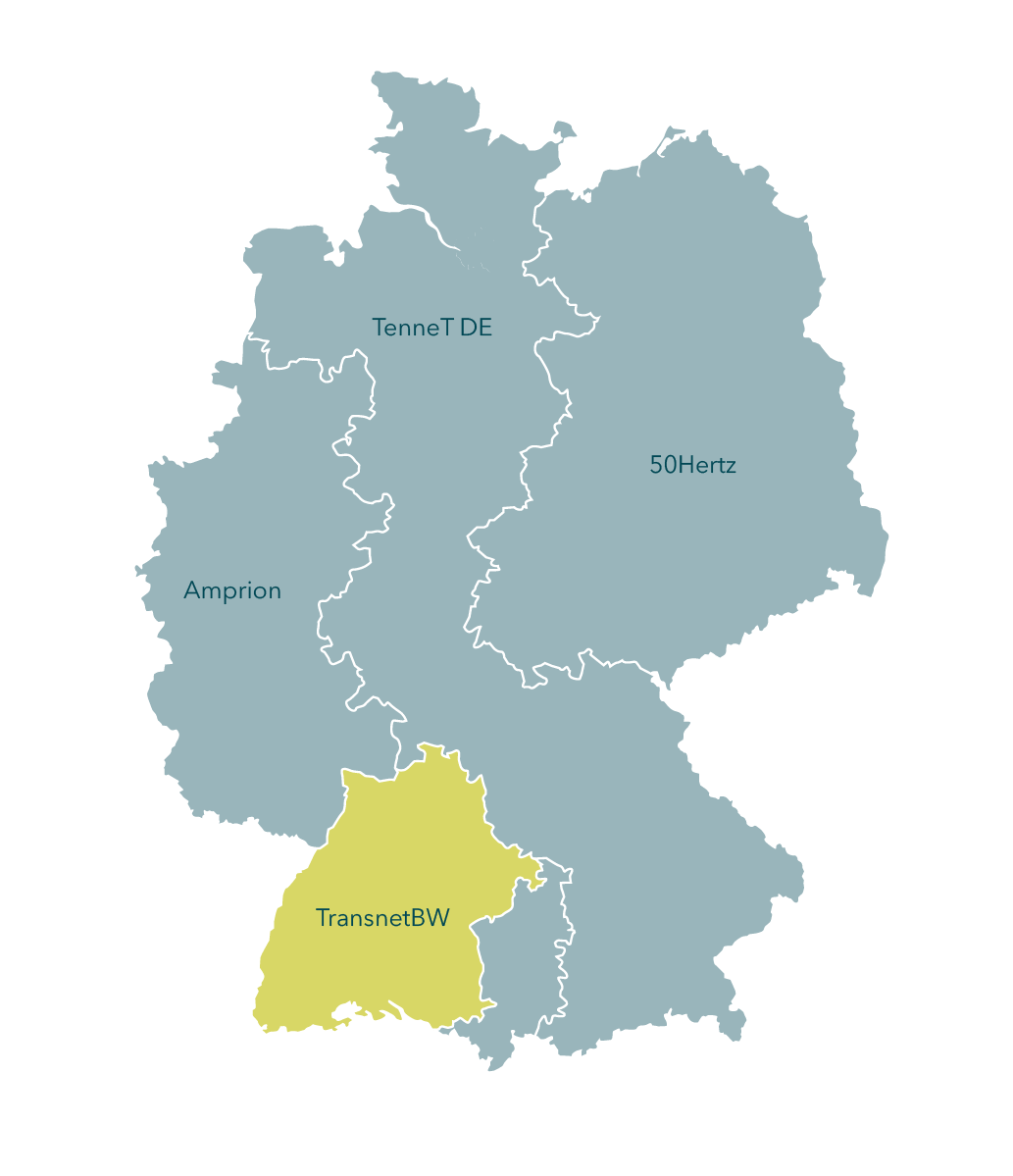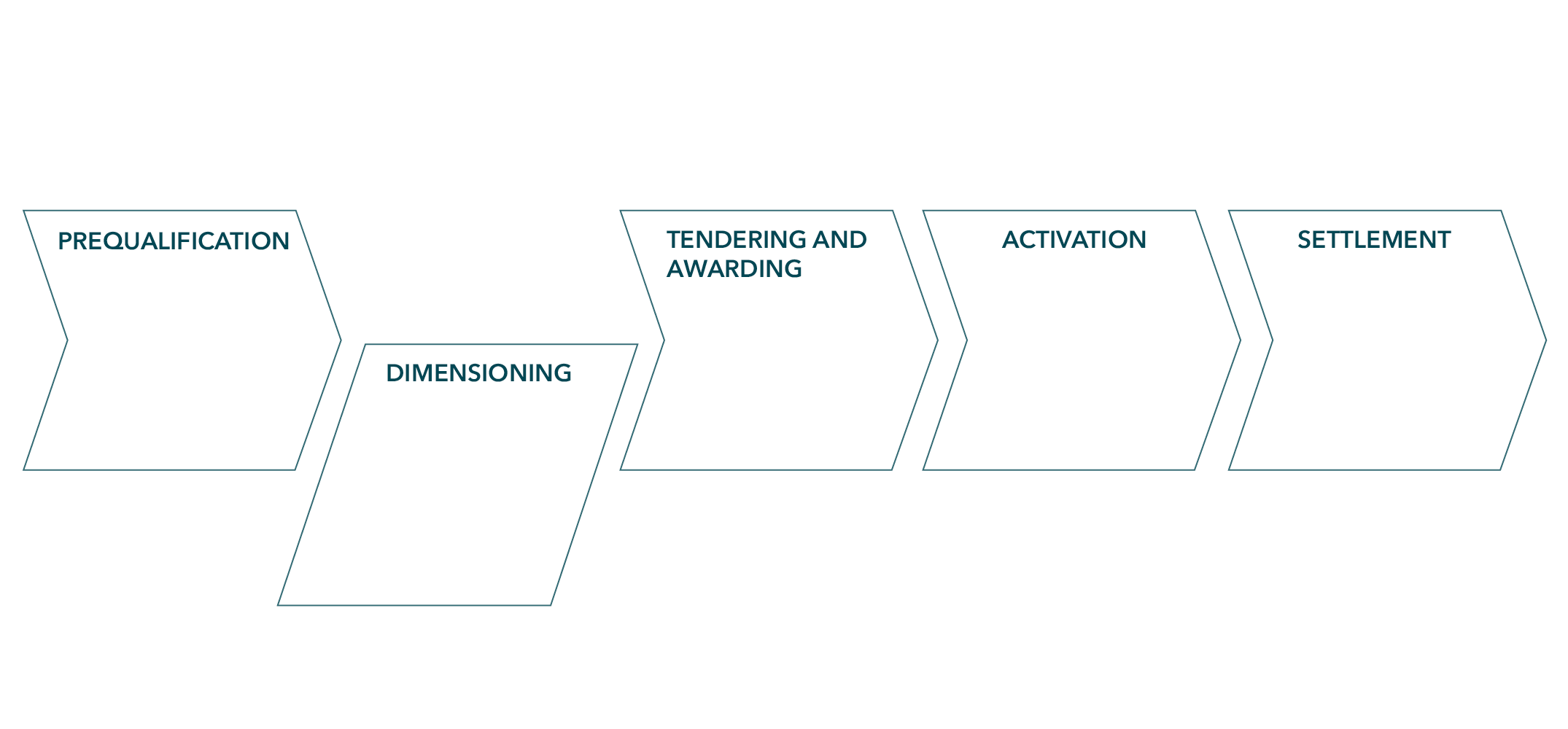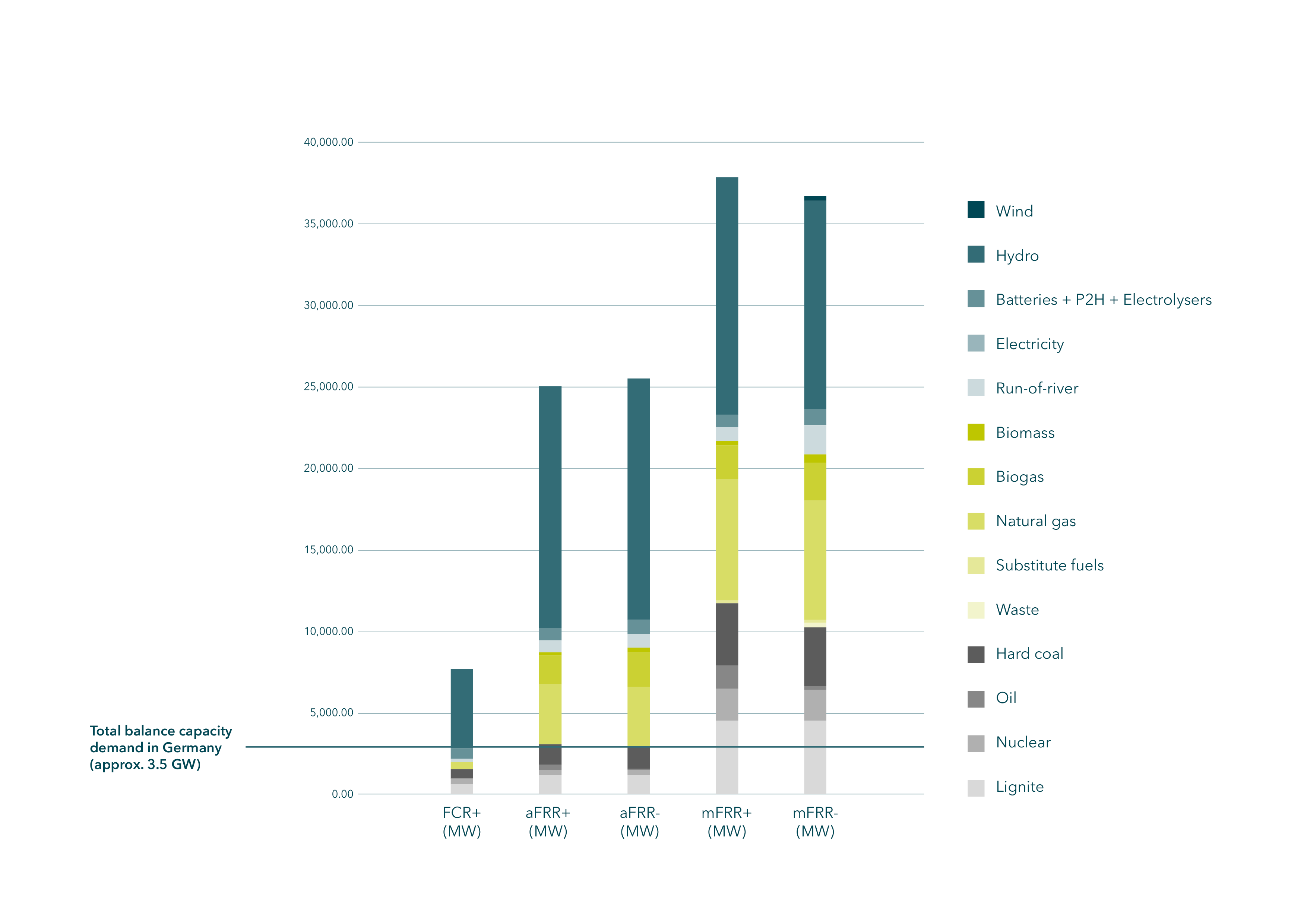Contact
Control energy
TransnetBW GmbH
Pariser Platz
Osloer Straße 15-17
70173 Stuttgart
Germany
Ancillary Services
The control reserve ancillary services is used by the transmission system operators to compensate for imbalances in the electricity grid in order to keep the grid frequency stable and thus ensure a secure system operation.
INTRODUCTION
Control reserve is the energy that is deployed to compensate for unforeseen power fluctuations in the electricity grid. The two main types of control reserve are balancing energy and balancing capacity. The transmission system operators (TSOs) are tasked with keeping the grid stable and thus ensuring a secure system operation. To maintain a stable grid frequency of 50Hz, electricity generation and consumption must always be in balance. This means that feed-in of electricity into the grid by electricity producers and withdrawal by consumers must be equal in order to balance the system. An overview of the grid frequency data broken down to the second is available for download at netztransparenz.de.
Control reserve can be positive or negative. The deployment of control reserve may involve feeding electricity into as well as drawing it from the grid. If the amount of electricity fed into the grid is higher than the amount of electricity consumed, grid frequency will exceed 50Hz. In those instances, TSOs use negative control reserve to restore the balance. If the grid frequency drops below 50Hz, however, the TSOs deploy positive control reserve. Negative control reserve can be provided by increasing electricity withdrawal (consumption) or reducing electricity generation. Accordingly, the processes are reversed for providing positive control reserve.
Products
The TSOs procure three types of control reserve with different lead times.
FCR (Frequency Containment Reserve) must be available within 30 seconds. It is one of the first control reserve types to be deployed when the grid frequency deviates from the 50Hz target frequency. FCR is used to compensate for fluctuations in grid frequency in the short term and is activated automatically and across Europe.
aFRR (automatic Frequency Restoration Reserve) is used to relieve FCR that has been deployed in solidarity within the European interconnected system after a disruption. It must be activated within five minutes. Activation takes place through a fully automated call-up by the TSO in whose control area the deviation in the system frequency has been registered.
mFRR (manual Frequency Restoration Reserve) is used to relieve deployed aFRR and also in addition to available aFRR in order to remedy more severe imbalances in system frequency. Activation takes place within 12.5 minutes for a period of at least 15 minutes after a manual decision to activate by the TSOs.
BALANCING MARKET
The balancing market is the market for procuring control reserve. In Germany, TSOs procure their FCR, aFRR and mFRR in a tendering process on the joint internet platform for allocating control energy, regelleistung.net. In November 2020, a Balancing Energy Market for aFRR and mFRR was introduced in addition to the Balancing Capacity Market. Balancing capacity and balancing energy are procured in two separate tendering processes. For FCR, balancing capacity only is procured.
Germany is divided into four control areas managed by 50Hertz Transmission GmbH, Amprion GmbH, TenneT TSO GmbH and TransnetBW GmbH. As the entities responsible for the control zones, the German TSOs are tasked with a reliable and secure operation of the electricity grid in their respective control areas. The control areas are managed under the umbrella of the German Grid Control Cooperation (GCC). Within the GCC, the four TSOs optimise the provision and activation of control energy. The demand for control reserve is calculated jointly and then tendered. In addition, control energy is activated at optimal cost and an inverse activation is avoided. More information on Grid Control Cooperation can be found at regelleistung.net.

PROCESS OVERVIEW

Potential balancing service providers must provide proof that they meet the technical requirements for the reservation and activation of the different control reserve qualities in a prequalification process in order to gain access to the balancing markets. The prequalification documents can be downloaded by the respective TSOs via the pre-qualification platform for balancing service providers, the PQ Portal. Access to the PQ Portal can be requested via the responsible connecting TSO.
More information on prequalification can be found at regelleistung.net.

The transmission system operators of continental Europe calculate the FCR to be reserved annually and in coordination with each other. Currently, 3,000 MW of FCR must be kept in reserve according to the System Operation Guideline (SO GL) for the continental European synchronous area. The requirement for aFRR and mFRR is calculated by the German TSOs using a dynamic dimensioning procedure.
Further information on dimensioning can be found at Control energy demand (dimensioning).
Tendering, submission of bids and informing providers on awarded contracts or rejections take place via the joint procurement platform regelleistung.net. Procurement of control reserve products (balancing capacity and balancing energy) takes place across control areas and partly in cooperation with European transmission system operators (FCR Cooperation, ALPACA).
On the balancing capacity market, bids can be submitted as a capacity price. Providers that are awarded contracts on the balancing capacity market commit to hold the offered balancing capacity on standby for potential activation. They receive remuneration for the capacity price solely for holding the capacity in reserve. A “pay as bid” procedure applies.
On the balancing energy market for aFRR and mFRR bids are submitted for activating balancing energy. Providers that have been awarded a contract on the balancing capacity market are obliged to submit bids on the balancing energy market that are at least equal to the awarded balancing capacity rate. Providers that did not participate in or were not awarded a contract on the balancing capacity market can still submit bids on the balancing energy market. The providers submit the energy price. This price refers to the actual provision of control energy in the case of activation, meaning that the provider will only be remunerated in the case of actual activation of control energy. The rate is based on the highest bid during the respective activation period.
Only control reserve from providers whose bids for balancing energy have been awarded will be activated. Activation takes places according to a merit order list and activation of control reserves varies depending on the reserve type. While aFRR and mFRR are called up according to the principle of causation, FCR is activated in the entire synchronous area based on the deviation from the target value according to the principle of solidarity.
For the control reserve products FCR, aFRR and mFRR, remuneration based on the capacity price is paid for keeping positive or negative capacity in reserve. In addition, remuneration based on the energy price for balancing energy that has actually been activated and delivered is paid for aFRR and mFRR. Remuneration for reserving capacity is always a payment by the TSOs to the balancing service providers. Remuneration of activated balancing energy takes place depending on the direction of activation and the energy price as a payment (credit note) or claim by the TSO towards the balancing service providers. The billing process will be carried out by the connecting TSO, regardless of whether it is credit note or claim. The billing process is based on the modalities for balancing service providers.
Cooperations
The TSOs closely collaborate at the national and European levels. Cooperations come about as the result of implementing the requirements from the Electricity Balancing Guideline (EB GL). There are also voluntary cooperations for jointly procuring control reserve. Further information on the different types of cooperation is available at:
Information platform of the German transmission system operators
Internet portal of the German TSOs for procuring control reserve
ENTSO-E transparency platform
Project information on the national implementation of MARI/PICASSO - Confluence
Website of the European Network of Transmission System Operators
TransnetBW GmbH
Pariser Platz
Osloer Straße 15-17
70173 Stuttgart
Germany